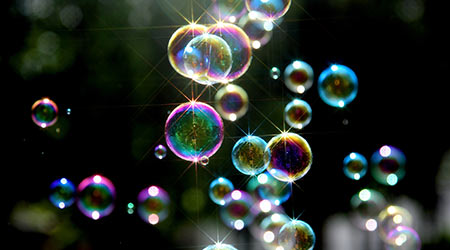
Supplied by PathoSans.
True soap is made with natural ingredients that when combined are effective but benign to human health. Production of it requires very little energy. There are few steps and byproducts to production, few wastes, and no allergens or residues associated with it.
Imitation soaps are detergents made with synthetic substances (although there are a few detergents made with natural ingredients). Detergents are mainly products of post-World-War-II shortages of the natural oils making up true soap. These soaps/detergents are mostly petrochemicals. Production is energy-intensive, requires nearly a dozen steps, requires the addition of synthetic fragrance to mask intrinsic odor, and depletes a non-renewable resource (crude oil or petroleum).
Saponification is the term used for true "soap making"" where fats/oils are converted to soap by adding a strong base.
Making Simple Soap, Simply
An emerging technology known as ElectroChemical Activation (ECA) enables making residue-free soap on-site using salt, water, and electricity.
While electrolysis of water is decades old, recent applied technology for facility cleaning integrates physics, chemistry, electrolytic cell design, and multi-membrane configuration for sustainable, low-cost cleaning.
Per Laura Louis, a field consultant for PathoSans, a leading technology firm producing on-site ECA solution generating systems: “Some systems have special patented technology designed to produce a film-free GS-37 certified cleaner that saponifies surface fats or oils to produce a true soap for effective cleaning; plus, a separate stream that can disinfect without traditional chemical disinfectants.”
On-site generated pure cleaning and disinfecting solutions are also green with a small carbon footprint, as there is no shipping, storing, handling or disposing of standard chemicals and packaging.
Telling the Difference
Knowing the difference between true, pure “soap” (residue-free cleaning solution) and a detergent masquerading as one, is as simple as requesting an ingredient list from your solution provider.
Pure soap has a very short list of basic ingredients, whereas imitation soaps have synthetic fragrances, surfactants, foaming agents, and ingredients with names that are hard to pronounce ─ and health and environmental outcomes that are even harder to live with.

 The Down and Dirty on Cleaning in Virus Season
The Down and Dirty on Cleaning in Virus Season How Surfactant Use is Expanding in Commercial Cleaning
How Surfactant Use is Expanding in Commercial Cleaning Clean Buildings Conference
Clean Buildings Conference